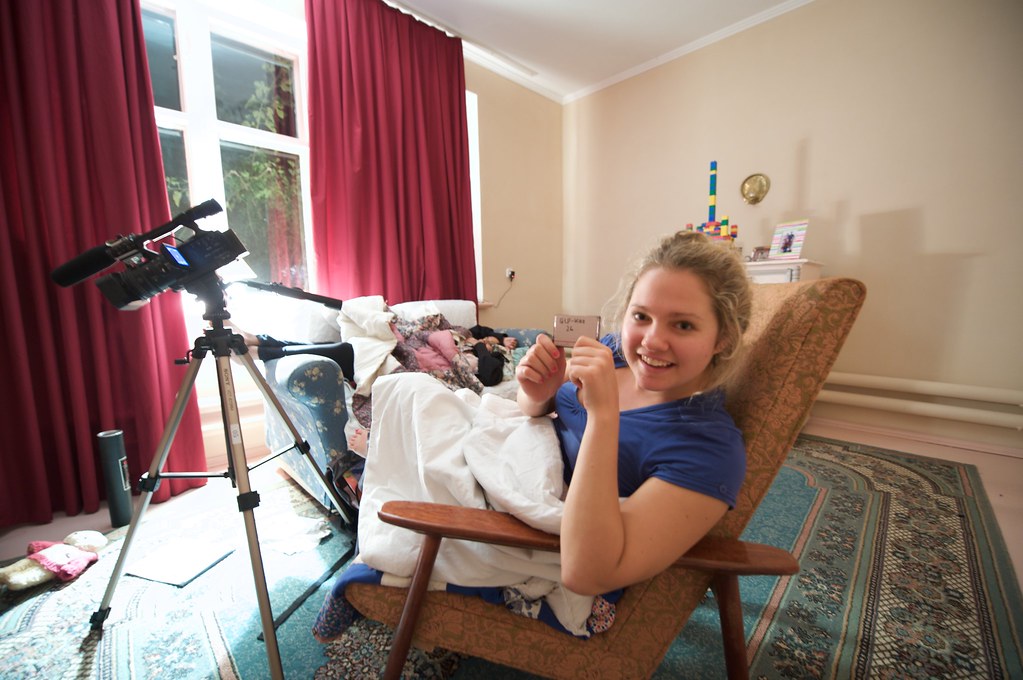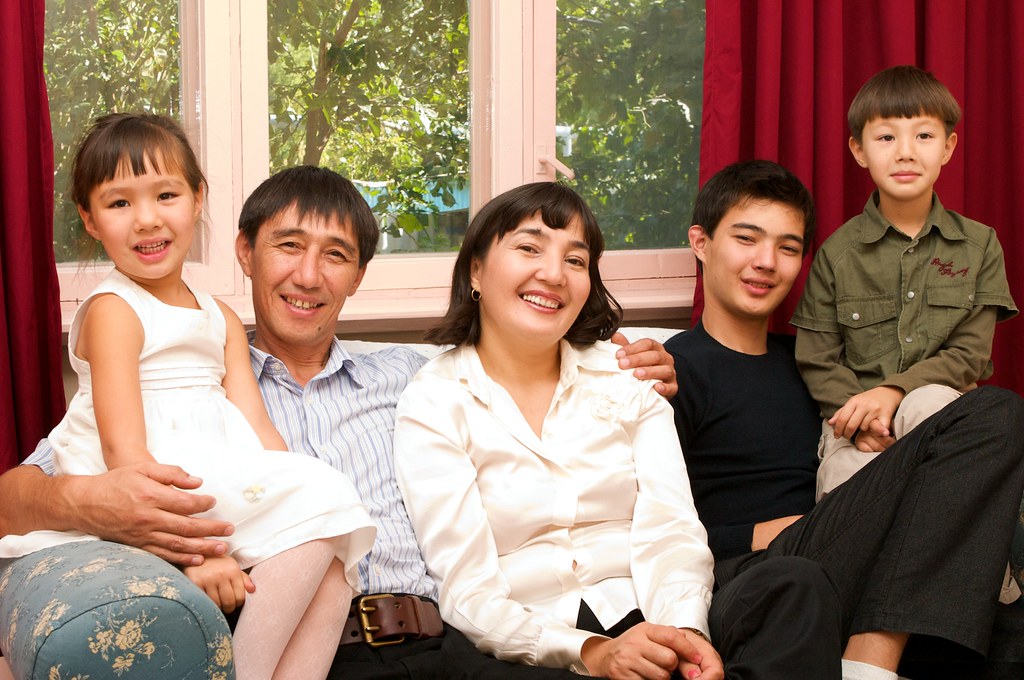Simone Goldsmith produced the tenth and final shoot in the first series of Global Lives curated shoots. Here she talks about the struggle to find a participant to follow and produce a beautiful 24 project even with limited experience. Produce your own Global Lives shoot—applications due March 17!

Simone holding the last tape for the Global Lives Project Kazakhstan shoot
Back in 2009, I was studying communications at Temple University, an American university in Japan. I was 19 and had moved from Australia the year before. By the end of my first year of university I had produced a Global Lives Project shoot with a crew from Switzerland, Japan, India, and Taiwan. Here’s my story.
I had been helping my professor with post-production for the Global Lives shoots from Lebanon and Japan for several months when GLP began organizing their tenth and final shoot of the first series. They had been approached by a journalist and media analyst in Kazakhstan who didn’t have much experience working with video, let alone any access to camera equipment or post-production facilities.
GLP’s premiere screening of all ten shoots was already in the planning for the following year so they urgently needed a producer to step up. My professor mentioned the opportunity, but lacking production experience myself I sought advice from a couple of my mentors. Their response was discouraging.
‘You’re not old enough to take on this workload and responsibility,’ they told me. ‘Pre-production and production is hard and takes a lot of work, but organizing and executing the post-production is even harder.’
They were worried that if the shoot didn’t work out (we were already running behind schedule) then it could be demoralizing. They added that if I went through with it, it will be a lot of fun and extremely educational and rewarding but still warned that I should not go into it unprepared.
After much consideration, I decided to jump in and do the shoot.

Zhanna Dosmailova, the tenth Global Lives on-screen participant
So the planning began. I connected with the journalist and another volunteer on the ground. Since this was the tenth shoot we had strict criteria to meet in selecting our on-screen participant. We needed a girl aged 0-9, from a rural area, and of a religion we can classify as “other” (not one of the major religions and not atheist). In addition, her family couldn’t earn more than $2 (US) per day per family member.
Weeks were passing and we hadn’t had much luck finding a participant. I considered looking into a neighboring country but my research showed that, despite the abundance of oil money in Kazakhstan, there is a large poor population in Kazakhstan’s rural areas. So I knew we would find someone, we just had to look harder.
I contacted some NGOs who run programs in rural areas. I didn’t hear back from most of them. But I did receive a couple of replies from groups who work closely with children who are orphaned, minority, or from single parent families. Our preference was to work with a young girl in a more traditional family setting (Our Lebanon shoot had been with a young girl in a refugee camp. If two youth are in such atypical situations we were risking having an overly anomalous representation of youth.)
But time was running out. I knew we couldn’t be too fussy. One NGO was linked to a small orphanage privately run by a husband and wife. It wasn’t a typical orphanage (the kids call the owners mum and dad) so I figured this was a fair compromise. To get a sense that the girl would not be camera shy I asked for some photos. She and her family were gorgeous.

The Dosmailova family poses for a photo before their interview inside their home.
My crew changed daily. Unfortunately some members had to pull out due to last minute trips, school commitments and finances but I managed to convince a photographer friend of mine to join us last minute.
Working closely with the NGO was fantastic. The staff liaised with the family and even organized our transport and housing for us. We actually stayed in the orphanage which was great; we were able to get to know the kids well, but also we were able to give some money to the family. Our translator, who worked at the NGO, stayed with us while we were there to ensure the family felt totally comfortable and always knew exactly what was going on.
We flew into the cultural capital Almaty and drove 8 hours to Vannovka in the country’s south-west. On the second day the family took us to the mountains which were absolutely stunning! By the evening the orphanage had become a disco! We bonded with Zhanna and her ‘brothers’ and ‘sisters.’ After lots of dancing we sat them down and explained Global Lives. This was important in making the kids feel comfortable with us and the camera. The 24-hour shoot, life-story interview, and still photographs were incredibly tiring (even more so with children!) but lots of fun.
On our last day we were treated to a massive lunch of horse meat, fried dough, and fermented mare’s milk! It was an emotional farewell for both parties. The family had been so welcoming and hospitable. We checked out a famous bazaar before our long bus trip back to the big city. In Almaty, we stayed with the parents of a friend of mine. One of the wife’s friends was a teacher, so I had arranged to present at her school and at two others. This a great way to generate local interest in the project but more importantly an excellent opportunity to recruit volunteers for the transcription and translation of the footage.
After a successful and incredibly fun shoot, we all went our separate ways. I went back to Tokyo to get started on the post-production. All the stress and hard work in organizing the trip was absolutely worth it. I am still so grateful for having the opportunity to produce a Global Lives shoot.
See the full Kazakhstan shoot here! Submit a inquiry to produce a Global Lives shoot by March 17th.

We flew into the cultural capital Almaty and drove 8 hours to Vannovka in the country’s south-west. On the second day the family took us to the mountains which were absolutely stunning! By the evening the orphanage had become a disco! We bonded with Zhanna and her ‘brothers’ and ‘sisters.’ After lots of dancing we sat them down and explained Global Lives. This was important in making the kids feel comfortable with us and the camera. The 24-hour shoot, life-story interview, and still photographs were incredibly tiring (even more so with children!) but lots of fun.
very nice article